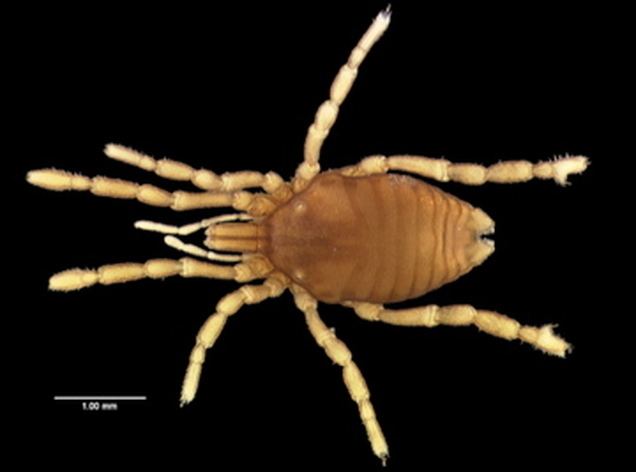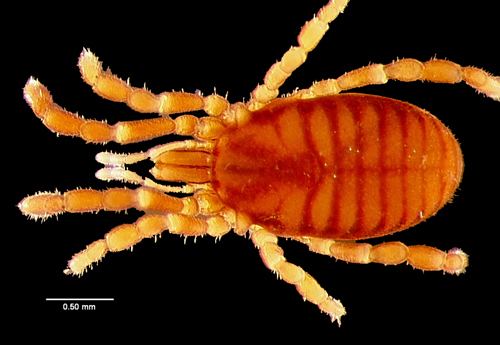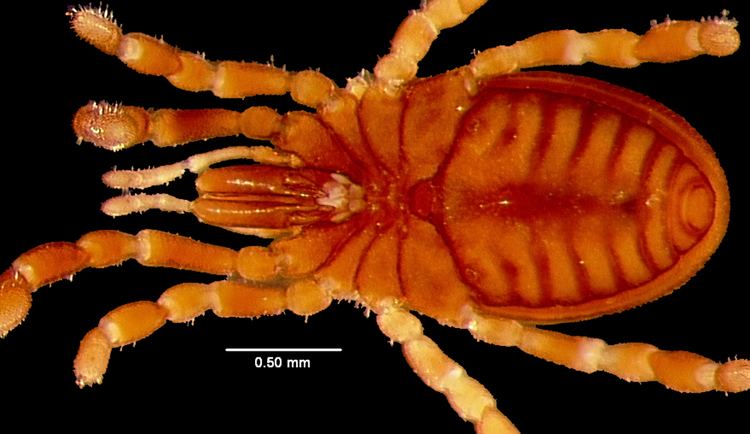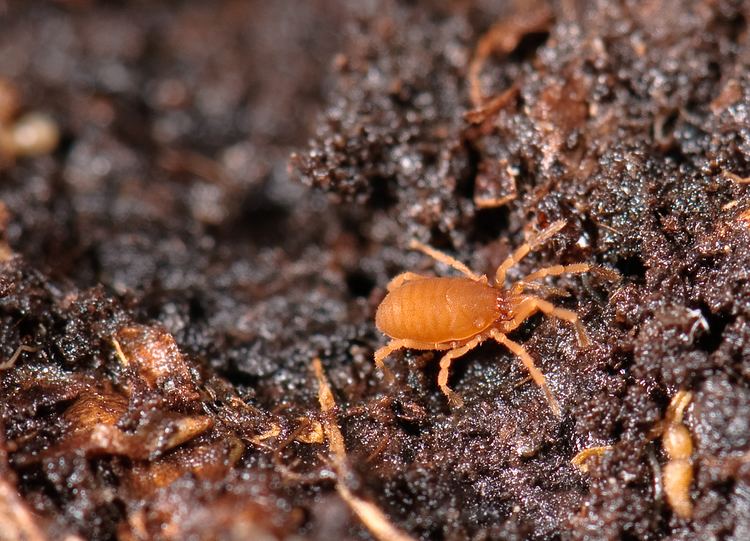Order Harvestmen | Rank Suborder | |
 | ||
Similar | ||
Discovery of adult cyphophthalmi harvestmen on mindanao
Cyphophthalmi is a suborder of harvestmen, with about 36 genera, and more than hundred described species. The six families are currently grouped into two infraorders, the Tropicophthalmi and the Temperophthalmi; however, these are not supported by modern phylogenetic analysis.
Contents
- Discovery of adult cyphophthalmi harvestmen on mindanao
- Relationships
- Distribution
- Fossil Record
- Systematics
- References

They are smaller than the more familiar "daddy long-legs" harvestmen, with adults ranging from 1 to 6mm, including legs. Moreover, their legs are comparatively short compared to their body length, typically shorter than the body. Some superficially resemble mites. Their coloration is almost always some shade of brown, with a heavily sclerotized body, and they are quite inconspicuous, residing in leaf litter or in caves. Many cyphophthalmids are eyeless, and presumably rely on olfactory cues to find food and mates. Their scent glands are located on special elevated cones called ozophores. They have low dispersal rates and consequently high endemism.

Relationships

Cyphophthalmi is one of the two lineages of harvestmen, the other, containing the Laniatores, Dyspnoi and Eupnoi is also called Phalangida. Although they are grouped into the infraorders Temperophthalmi and Tropicophthalmi, this division is not supported by either molecular or morphological data. DNA sequence data suggests that Neogoveidae and Troglosironidae form a monophyletic group.
Distribution
Cyphophthalmids are found on all continents, with the exception of Antarctica, where they probably also once lived. As they did not disperse onto any oceanic islands, and it is believed that they did not travel between separate landmasses, they make an interesting subject for biogeography. Each of the six currently recognized families has a distinct distribution:
Colombia shows the largest diversity of cyphophthalmids among countries in South America. This could reflect the large number of ecosystems found there, but could also be due to a high rate of sampling in this country.
Fossil Record
A fossil cyphophthalmid assigned to a modern genus, Siro platypedibus Dunlop & Giribet, 2003 (Sironidae), was described from the ?Oligocene Bitterfeld amber of eastern Germany. A slightly older representative of this genus was described from Eocene Baltic amber as Siro balticus Dunlop & Mitov, 2011. A third fossil, Palaeosiro burmanicum Poinar, 2008, has been described from the Cretaceous Myanmar (or Burmese) amber. It was also assigned to Sironidae but may in fact belong to Stylocellidae (a more typical Asian genus).
